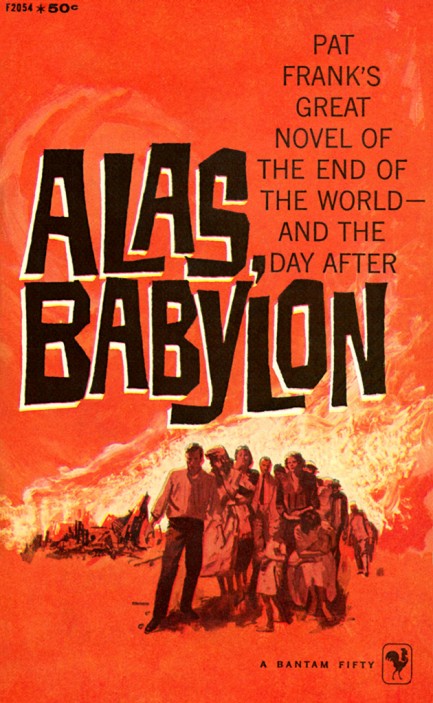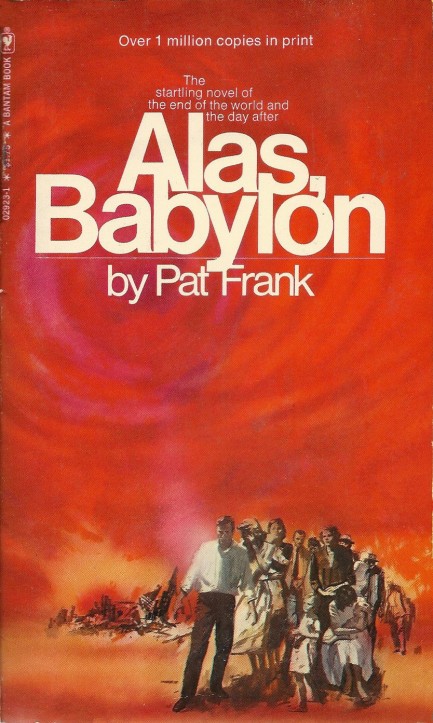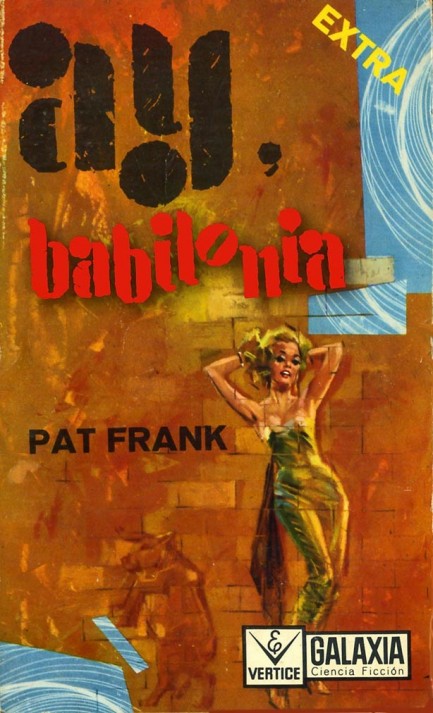 The decline and incineration of Western civilization.   
These covers for Pat Frank's acclaimed post apocalypse drama Alas, Babylon can be considered additions to our collection of nuclear explosion book covers. In the story, a missile from a fighter jet causes an explosion in Syria that the Soviets mistake for a full scale NATO nuclear strike. They retaliate with a full strike, the U.S. retaliates with a full strike, and that's all she wrote. Actually, not really. That's the first act. Frank wrote plenty more, none of it fun. The novel first appeared in 1959, with these not-quite-identical Bantam editions coming later. We may have missed them in our initial searches for nuke covers because they're pretty subtle, combing the idea of a red sun with an atomic blast, but we're sure these are supposed to be explosions—or at least evoke them. There's also a very cool Spanish cover we posted way back in 2009. No explosion on that one, but it's exceedingly interesting.
 The bomb and the fall of Babylon. 
American author Pat Frank’s novel of nuclear aftermath, Alas, Babylon, appeared in 1959, with this Spanish edition entitled Ay, Babilonia following in 1965. The sexed-up cover was by painted by Sholler—no first name known. It seems to have been one of his only contributions to mid-century paperback art, but a nice contribution it is.
|
 |

The headlines that mattered yesteryear.
2003—Hope Dies
Film legend Bob Hope dies of pneumonia two months after celebrating his 100th birthday. 1945—Churchill Given the Sack
In spite of admiring Winston Churchill as a great wartime leader, Britons elect
Clement Attlee the nation's new prime minister in a sweeping victory for the Labour Party over the Conservatives. 1952—Evita Peron Dies
Eva Duarte de Peron, aka Evita, wife of the president of the Argentine Republic, dies from cancer at age 33. Evita had brought the working classes into a position of political power never witnessed before, but was hated by the nation's powerful military class. She is lain to rest in Milan, Italy in a secret grave under a nun's name, but is eventually returned to Argentina for reburial beside her husband in 1974. 1943—Mussolini Calls It Quits
Italian dictator Benito Mussolini steps down as head of the armed forces and the government. It soon becomes clear that Il Duce did not relinquish power voluntarily, but was forced to resign after former Fascist colleagues turned against him. He is later installed by Germany as leader of the Italian Social Republic in the north of the country, but is killed by partisans in 1945.
|

|
|

It's easy. We have an uploader that makes it a snap. Use it to submit your art, text, header, and subhead. Your post can be funny, serious, or anything in between, as long as it's vintage pulp. You'll get a byline and experience the fleeting pride of free authorship. We'll edit your post for typos, but the rest is up to you. Click here to give us your best shot.

|
|










































































